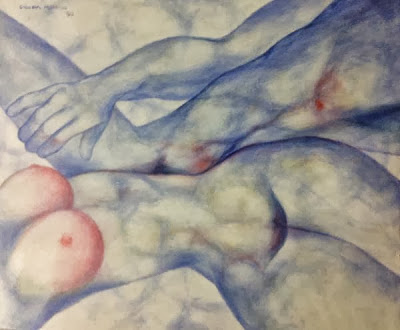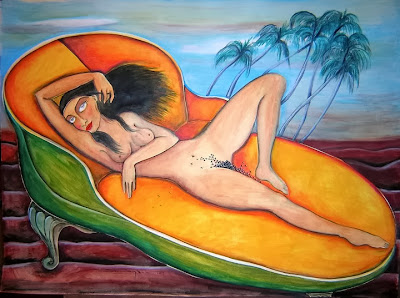Los Desnudos y el Eroticismo en el Arte Cubano / 2nda Parte
Nudes and Eroticism in Cuban Arts / 2nd Part
 |
| Servando Cabrera - Fin de Temporada |
 |
| Servando Cabrera - La Hora del Bochorno |
 |
| Servando Cabrera - Los Novios de la Lisa |
 |
| Servando Cabrera - Los novios del mediodia |
 |
| Servando Cabrera - Mas Alla del Horizonte |
 |
| Servando Cabrera Moreno - Bandera blanca para un Desnudo |
 |
| Servando Cabrera Moreno - El Espejo |
 |
| Servando Cabrera Moreno - Gabi Fofo Milike |
 |
| Servando Cabrera Moreno - La Trinchera |
 |
| Servando Cabrera Moreno - Pilatos |
 |
| Servando Cabrera Moreno - Primera Persona |
 |
| Vicente Dopico Lerner - Estudio Para un Descanso |
 |
| Zaisa Del Rio Signos No 37 |
 |
| Luis Pardini - Morning Dish - Acrilico en Canvas |
 |
| Manuel Mesa Hermida - Desnudo Femenino |
 |
| Mariano Rodriguez - Desnudo Con Frutas |
 |
| Mariano Rodriguez - Desnudo de Mujer |
 |
| Mario Almaguer - Las Tres Gracias |
 |
| Miguel Ordoqui - Gorda Fumando |
 |
| Miguel Ordoqui - La Tentasion |
 |
| Miguel Ordoqui - Orgia |
 |
| Ramon Unzueta |
 |
| Ramon Unzueta - Arlequin - Graphite on Paper - 8in x 10in - 2011 Courtesy of the Flores Carbonell Collection |
 |
| Ramon Unzueta - Desnudo |
 |
| Ramon Unzueta - Erotico en Azul Courtesy of the Flores Carbonell Collection |
 |
| Ramon Unzueta - Jean |
 |
| Ramon Unzueta - Sin Titulo |
 |
| Ramon Unzueta - Tatuaje. Oil on board. 12 x 17. |
 |
| Ramon Unzueta - Icaro |
 |
| Ramon Unzueta - Papaya |
 |
| Roberto Estopinan - Femenine Torso 2 |
 |
| Roberto Estopinan - Femenine Torso |
 |
| Roberto Fabelo - Delicatessen de Ocho Comensales |
 |
| Roberto Fabelo - Dibujo Sin Titulo - 1987 Courtesy of the Flores Carbonell Collection |
 |
| Roberto Fabelo - Pedazos de Munecas |
 |
| Roberto Fabelo - Untitled |
 |
| Rocio Garcia - El Bano |
 |
| Rocio Garcia - Encarnados |
 |
| Rocio Garcia - La Modelo |


+-+Tray+with+Fruits+(Watermelon)+1941+-+Perez+Art+Museum.jpg)


